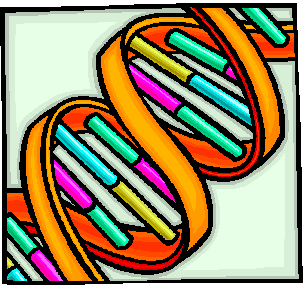 CHEMISTRY 161, Section 2----Ritchey
CHEMISTRY 161, Section 2----Ritchey
General Biochemistry
Last Updated: AUGUST 20, 2015
Welcome
to the General Biochemistry, Section 1 homepage on the World Wide Web. These ePages provide supplemental information for our course
taught by me, Professor James M. Ritchey at
![]() Lecture Meeting Information and Location:
Lecture Meeting Information and Location:
Section 2: MWF 1:00 PM to 1:50 PM, SEQUOIA 456
![]() Course Contacts:
Office: SQU-428C (in the back of lab room SQU-428), Office Hours: MWF--10:00 AM to 11:00 AM, ritchey@csus.edu,
Office Telephone Number: 278-7654
Course Contacts:
Office: SQU-428C (in the back of lab room SQU-428), Office Hours: MWF--10:00 AM to 11:00 AM, ritchey@csus.edu,
Office Telephone Number: 278-7654
![]() Chemistry
Drop Policy:
Chemistry
Drop Policy:
Please see the
latest University catalog for a current drop policy.
![]() Textbook:
Biochemistry: A Short Course by Tymoczko et al., Third Edition from Freeman--THIS
IS THE TEXT I REFER TO IN CLASS, BUT OTHER EQUIVALENT PRINTED AND ON-LINE
TEXTBOOKS ARE ACCEPTABLE.
Textbook:
Biochemistry: A Short Course by Tymoczko et al., Third Edition from Freeman--THIS
IS THE TEXT I REFER TO IN CLASS, BUT OTHER EQUIVALENT PRINTED AND ON-LINE
TEXTBOOKS ARE ACCEPTABLE.
![]() Send
questions/concerns/comments/suggestions to me at: ritchey@.csus.edu
Send
questions/concerns/comments/suggestions to me at: ritchey@.csus.edu
![]() Grading:
Grading:
Attendance: You are expected to attend every class.
Quiz-- One quiz will be given for 30pts. The quiz will be on the
structures, names, and abbreviations for the twenty common amino acids. In
addition to the specific quiz, the amino acid material could also be on the
appropriate exams.
THERE COULD BE ONE OR MORE “POP
QUIZZES” (VARIABLE POINTS EACH) TO ESTABLISH THAT YOU ARE ATTENDING CLASS AND
CURRENT IN THE MATERIAL.
Exams-- Exams will be given on the following days. The
lowest score of the three exams will be dropped.
The Final Exam will cover all the
material from the entire course.
First Exam (100pts)---
October 2, 2015
Second Exam (100pts)---
November 6, 2015
Third Exam (100pts)---
December 11, 2015
Cumulative Final Exam (200pts)--- Monday, December 14, 2015, 12:45PM to
2:45PM
The theoretical maximum total score for this course will be 430pts
(without pop quizzes). However, your grade will be based on the person with the
actual highest number of points as follows:
90% of actual high= A- to A
78% of actual high= B- to B+
65% of actual high= C- to C+
55% of actual high= D- to D+
****PLEASE
NOTE THAT I TRY TO BE AS FAIR AS POSSIBLE IN GRADING AND SHOULD ALBERT
EINSTEIN’S GREAT GRANDDAUGHTER/SON BE IN THIS CLASS AND HAVE A VERY HIGH TOTAL
(APPROXIMATELY 5% ABOVE THE NEXT POINT TOTAL) I WILL SELECT THE SECOND HIGHEST
TOTAL UPON WHICH TO BASE THE CURVE (OR 5% BELOW THE HIGHEST).****
![]() Schedule
and Associated
Schedule
and Associated
THE TEXTBOOK CHAPTERS CONTAIN MORE
MATERIAL THAN WE WILL COVER IN LECTURE. THE EXAMS WILL BE BASED ONLY ON TOPICS
THAT I HAVE DISCUSSED IN LECTURE.
Chapter 1-
Introduction—Biochemistry and the unity of life
Chapter 2-
Water, Chaos, and pH Problems.
Chapter 3-
Amino Acids
Chapters 4 and
5- Proteins
Chapters 6, 7,
and 8- Enzymes, Mechanisms, and Coenzymes.
Chapter 9-Hemoglobin and Allosteric Proteins
Chapter 10-
Carbohydrates.
Chapters 11
and 12- Lipids and Membranes.
Chapters 33, 34, 36, 39, and 40-
Nucleic Acids, Replication, Transcription, and Translation.
Chapter 15-
Energy and Bioenergetics.
Chapters 16,
17, 24, 26, and 26– Glycolysis,
Pentose
Phosphate Pathway,
Gluconeogenesis, Glycogen
Degradation, and Glycogen Synthesis.
Chapters 18
and 19- Citric Acid Cycle.
Chapters 20
and 21- Electron Transport and Oxidative Phosphorylation.
Chapters 27, 28, and 29- Lipid Metabolism.
****Time will most likely expire at this point in
the semester, or before, however, should we set new speed records additional
material may be covered.****
![]() Misc. Information
Misc. Information
![]() Problem Set Answers
and Various Materials
Problem Set Answers
and Various Materials
